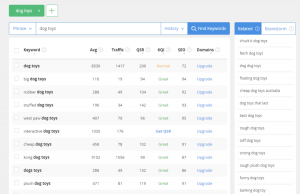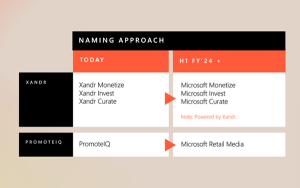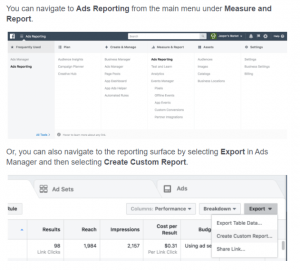For the average reader, the concept of advertising might conjure glitzy office scenes from AMC’s Mad Men, in which sticky client problems are solved in neat 5-act arcs through scotch-fueled bursts of creative inspiration. In reality, the process of bringing a marketing campaign to fruition is a little more complex, requiring more steps and moving parts than a Don Draper monologue.
Media planning and media buying are just two of the many parts that make up that advertising apparatus. Though media planners and media buyers represent two distinct positions, they work together in complementary roles to achieve common goals on behalf of their clients – that is, planning and executing ad campaigns that are effective, on-target, and on-budget.
The Media Planning Process
A successful ad campaign depends on much more than killer creative (though that is a crucial ingredient). A lot of work goes into figuring out the target audience and the most effective messaging for reaching them. Likewise, someone has to get that message on TV, in the paper, on the radio, on billboards, etc.
That’s where media planners and buyers come in. You can think of them as the slices of bread in the creative sandwich.
First, media planners synthesize research about the client’s goals, their product or service, and the overall market to help the client create an effective message and the best strategy for disseminating it. Though a creative agency or team will ultimately translate the client’s goals into aesthetic reality, it’s the media planner who helps the client come up with what to translate in the first place.
Then, once the ads have been created, the media buyer steps in to put them out into the world. Using the media planner’s strategy – you can think of it as a blueprint or game plan – media buyers negotiate with vendors to get the ads placed in the most advantageous spots for the target market.
Example: Creating a Media Plan for a Personal Finance App
Let’s say you’re working with a media planning and buying agency to create a media strategy for your new personal finance app. Before you can get to shooting on-location for that amazing TV ad you’re cooking up, you need to accomplish a few milestones:
- Outline your goals. Is there a certain number of impressions you want to achieve, or are you purely focused on sales? Maybe there’s a specific number of app subscriptions you’d like to hit by the end of the quarter. These goals will drive your strategy.
- Determine your target market. What sets your app apart from other budgeting apps, and whose needs or pain points does your app address?
- Craft your message. Once you know what’s special about what you’re providing and who you’re providing it for, it’s time to figure out how to communicate that most effectively.
- Plan your attack. What kinds of ads will you create, where and how often will they show up, and how much are you able to spend on this investment?
- Execute the plan. Create those ads and get them in front of your audience.
- Monitor results. Keep an eye on what’s working and what’s not so you can make changes and incorporate lessons learned in future campaigns.
If you’ve been paying attention, you know by now that it’s the media planning agency’s job to work with you throughout this process. Typically, the media planner walks you through steps 1 through 4, then hands the baton to the media buyer for the end of step 5. Both of their insights and skills sets come in handy for step 6.
Now let’s take a deeper dive into the roles, responsibilities, and skill sets of each position.
The Role of the Media Planner
As the name suggests, the media planner creates the media plan for a given product or service. If we revisit our personal finance app example, the media planners would use systematic processes to determine:
- The target audience – Who should the ads be aimed at, and how many members of that audience will be reached via particular outlets? For example, by talking to you and then performing market research, your media planner may find that your personal finance app is best suited for single millennials with student loan debt living in metropolitan areas and making $ 30-50K per year.
- The media mix – In other words, the most advantageous combination of media outlets for your message. The media planner will perform research to figure out where and how to best reach your audience. For the millennials mentioned above, for example, you might be looking at mobile search, streaming services, and social media. The media planner uses research to figure out not just where the ads should be placed, but also when and how frequently they should appear in a given outlet – say, between 7 and 10 PM on weeknights on Hulu.
- The budget – The media planner should work with you to determine the best use of your ad budget. That means not just setting total costs, but also allocating the appropriate amounts for different outlets – for example, 25% on radio, 50% on digital, and so on. The number and level of breakdowns depends on your product or service and budget.
How does the media planner arrive at these determinations? Through extensive, systematic research. This usually includes:
- Internal reviews – The media planner would sit down with you, the client, to discuss what makes your app special and what message will most effectively communicate that value.
- External reviews – The media planner would then take a look at possible target audiences, market trends, and the media landscape to form a plan of attack for disseminating your message.
- Competitor analysis – The media planner may compare your brand and app with other budgeting apps to see where there are opportunities to stand out.
By the end of this process, the media planner should have clear objectives – i.e., they should know what precise effect ads on specific media outlets should have on a particular target market – and be ready to create a detailed media strategy to achieve those goals. For example, your media planner may help you determine that you should aim to foster a sense of control and excitement for the future through ads that communicate the simplicity and sleek style of your app.
In other words, the media planner synthesizes knowledge about the product and message, the target audience, and the media landscape to chart out a plan, which will then be carried out by the media buyer.
Which brings us to…
The Role of the Media Buyer
Simply put, media buyers are the folks who get your ads in front of your target audience. Without media buyers, all that careful strategizing done by the media planner is for naught. Media buyers take the media planner’s strategy and put it into action by reaching out to vendors – the people selling ad space – and purchasing ad space at the best prices possible. In order to do this, they take into account the media mix outlined in the media plan, the target audience, and the budget.
In this way, media buyers use many of the same skills as salespeople. They must form and maintain relationships with vendors, cultivate and use knowledge of the most advantageous ad placements for different markets, and skillfully negotiate prices on behalf of the company placing the ads. They must also work closely with the media planner in order to carry out the established media plan.
Below are some of the skill sets a successful media buyer demonstrates:
- Research – Fostering knowledge about the media landscape, the various media outlets, and the respective markets they best serve. This includes traditional ad venues like television, radio, print, and billboards, as well as the ever-growing digital space, otherwise known as search engine marketing (SEM) or pay-per-click (PPC).
- Interpersonal Skills – Forming and maintaining vendor relationships. This is especially true for more traditional venues, whereas working in digital ad spaces may rely more on automation tools.
- Negotiation – The ability to stay within budget and negotiate the best prices for the most advantageous ad space (also known as inventory). Once again, the nature of negotiations depends somewhat on the venue. Increasingly, bidding in the digital space (for pay-per-click ads) looks less like a typical auction and more like an algorithm at work.
- Monitoring – Keeping an eye on the strategy once in motion and making adjustments as needed. The media buyer may work with the media planner here.
Media Planners and Buyers Play for the Same Team
Though they operate in distinct domains, media planners and media buyers work together to execute the most advantageous media strategy on behalf of their clients. Often they form two departments of an agency that specializes in media buying and planning, as opposed to forming part of a larger creative agency.
While this means clients are typically getting their ads created by one agency while outsourcing the planning and buying to another, it also lets the respective experts focus on what they do best.
As the media landscape has co-evolved with the digital landscape, media planners and buyers have had to keep up, adopting new areas of research and tools of trade (such as data analysis tools for market research and automation tools for PPC bidding). While no one knows for sure what the future holds, media planners and buyers will certainly have no shortage of interesting challenges ahead.
Digital & Social Articles on Business 2 Community(122)
Report Post






